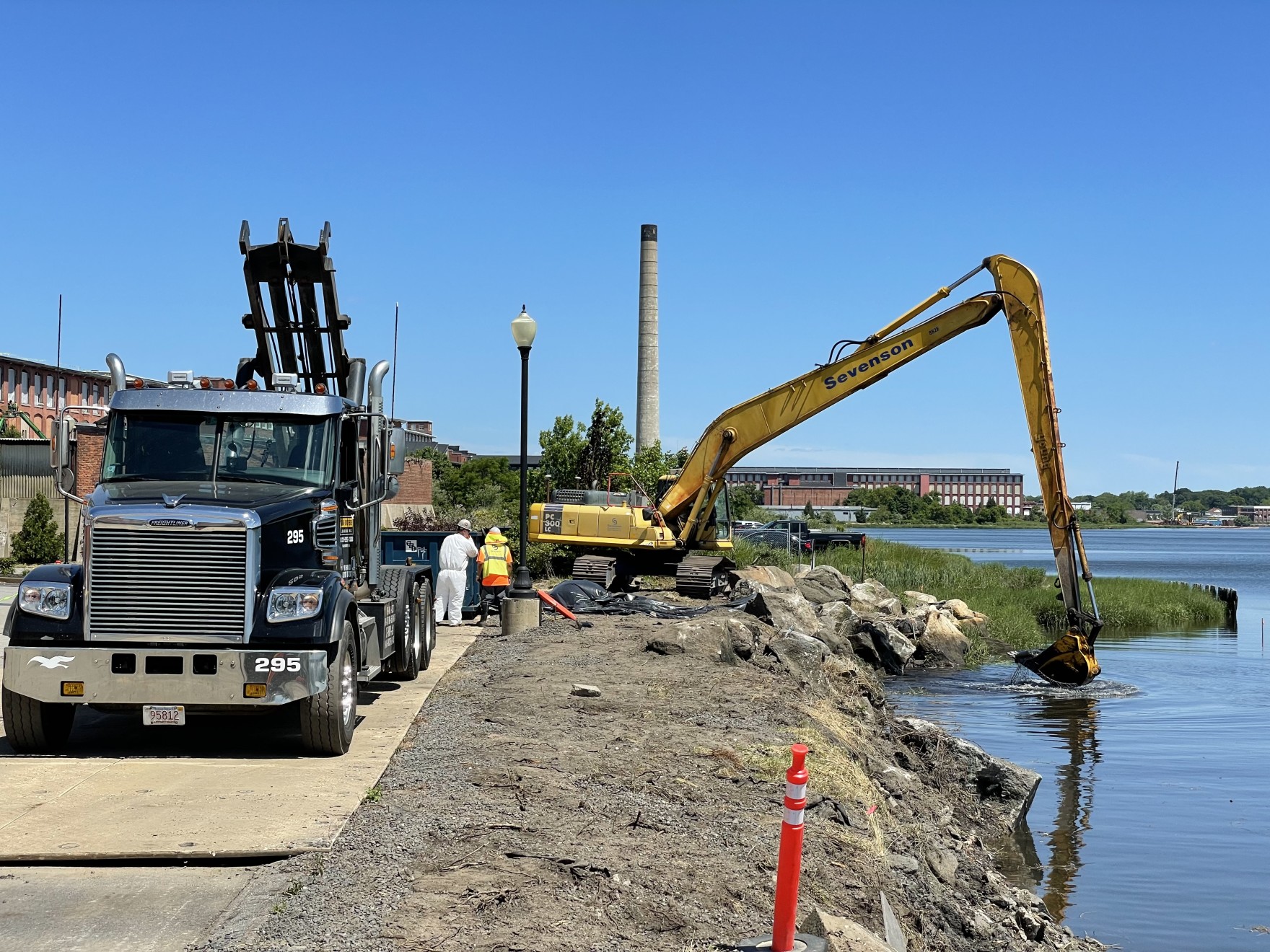New Bedford’s Harbor Is a Billion Dollars Cleaner, But Long-Term Impacts Remain

Workers remove contaminated sediment from a marsh along the edge of the New Bedford Harbor. (Daniel Ackerman/CAI)
Stephen Theberge grew up a few blocks from the harbor in New Bedford, Mass., and his memory of the waterway in the 1980s isn’t pretty.
“It was abysmal,” said Theberge, recalling the sight (and smell) of raw sewage and garbage lapping the shores where he used to fish. One image still sticks with him: “The striped bass’ gills would be black with all that pollution.”
The black coating on the fish gills was a buildup of polychlorinated biphenyls — PCBs — carcinogens that have plagued the harbor and its wildlife since the 1940s.
These days, Theberge says the water is looking clearer. Sometimes he can see clear down to the bottom of the harbor. “When I was young and going out on a boat—I don’t remember that.”
The turnaround is thanks to a decades-long cleanup by the Environmental Protection Agency. Now in its final stages, the effort has removed one million cubic yards of PCB-laden sediment — enough to bury a football field 500 feet deep — and brought a renewal of animal life to the harbor. But experts caution that trace amounts of PCBs could linger, impacting the health of the ecosystem for years to come.
For much of the 20th Century, New Bedford’s dockside factories used the PCBs to manufacture electrical components. Chemical spills and sewer discharges flushed high concentrations of the pollutant directly in the harbor, according to Wendy Heiger-Bernays, an environmental health scientist at Boston University.
“We usually talk about parts per billion, or parts per million,” said Heiger-Bernays. But in the New Bedford harbor “there were places where there were parts per thousand—concentrations of PCBs that, to best of my knowledge, we’ve never seen anywhere else in the environment. These were incredibly high.”
For the full story, including audio, continue on WCAI’s website.
